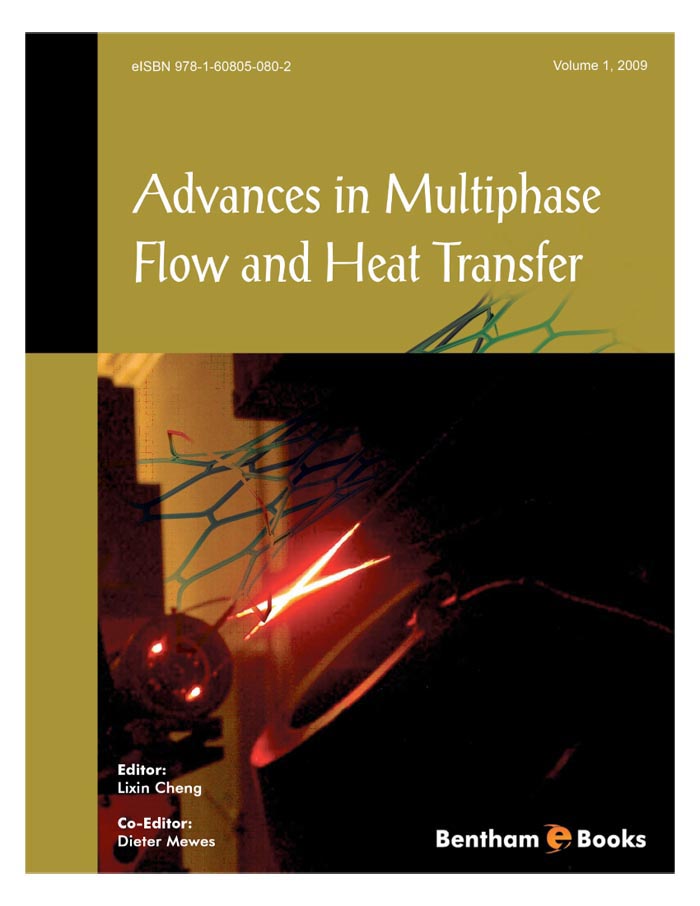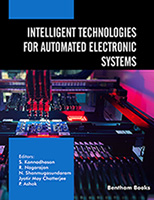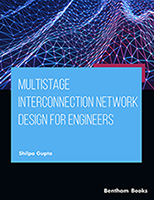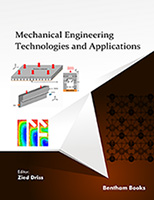Multiphase flow and heat transfer have found a wide range of applications in nearly all aspects of engineering and science fields such as mechanical engineering, chemical and petrochemical engineering, nuclear engineering, energy engineering, material engineering, ocean engineering, mineral engineering, electronics and micro-electronics engineering, information technology, space technology, micro- and nano-technologies, bio-medical and life science etc. With the rapid development of various relevant technologies, the research of multiphase flow and heat transfer is growing very fast nowadays than ever before. It is highly the time to provide a vehicle to present the state-of-the-art knowledge and research in this very active field. To facilitate the exchange and dissemination of original research results and state-of-the-art reviews pertaining to multiphase flow and heat transfer efficiently, we have proposed the e-book series entitled Advances in Multiphase Flow and Heat Transfer to present state-of-the-art reviews/technical research work in all aspects of multiphase flow and heat transfer fields by inviting renowned scientists and researchers to contribute chapters in their respective research interests. The e-book series has now been launched and two volumes have been planned to be published per year since 2009. The e-books provide a forum especially for publishing these important topics and the relevant interdisciplinary research topics in fundamental and applied research of multiphase flow and heat transfer. The topics include multiphase transport phenomena including gas-liquid, liquid-solid, gas-solid and gas-liquid-solid flows, phase change processes such as flow boiling, pool boiling, and condensation etc, nuclear thermal hydraulics, fluidization, mass transfer, bubble and drop dynamics, particle flow interactions, cavitation phenomena, numerical methods, experimental techniques, multiphase flow equipment such as multiphase pumps, mixers and separators etc, combustion processes, environmental protection and pollution control, phase change materials and their applications, macro-scale and micro-scale transport phenomena, micro- and nano-fluidics, micro-gravity multiphase flow and heat transfer, energy engineering, renewable energy, electronic chips cooling, data-centre cooling, fuel cell, multiphase flow and heat transfer in biological and life engineering and science etc. The e-book series do not only present advances in conventional research topics but also in new and interdisciplinary research fields. Thus, frontiers of the interesting research topics in a wide range of engineering and science areas are timely presented to readers.
In volume 1, there are eight chapters on various topics. Chapter 1 deals with the advances in void fraction, flow pattern maps and non-boiling heat transfer two-phase flow in pipes with various inclinations. Void fraction correlations for various pipe inclinations, both theoretical and empirical, that are widely available in the literature are compared with experimental data from various sources with different experimental facilities. The study produced a recommendation of six void fraction correlations and a proposed improved general void fraction correlation for horizontal to vertical pipe orientations. Further investigation has also been done specifically on the performances of available void fraction correlations with available experimental data for upward vertical two-phase flow. The work demonstrated that more accurate predictions can be obtained by giving attention to specific pipe inclination and ranges of void fraction. The result is a recommendation of a void fraction correlation that performs satisfactorily on the entire range of void fraction for upward vertical flow. Flow pattern maps of different pipe inclinations and gas-liquid combinations available in the literature are compared and discussed. The validity and limitations of the numerous two-phase non-boiling heat transfer correlations that have been published in the literature over the past six decades are discussed. Practical heat transfer correlations for a variety of gas-liquid flow patterns and pipe inclination angles are recommended.
Chapter 2 presents a comprehensive boiling heat transfer in reduced gravity environments. The effects of low gravity on boiling heat transfer are presented. A short overview of boiling is provided to introduce non-specialists to the field of boiling heat transfer to make them aware of the fundamental physical mechanisms. The facilities used to obtain variable gravity environments are then described, and recent results are reviewed. Topics covered include bubble dynamics, nucleate pool boiling, critical heat flux, transition boiling, flow boiling, boiling of mixtures, electric field effects, acoustic effects and quenching. Planned research activities in Japan, the United States, and Europe are presented.
Chapter 3 deals with the two-phase flow regime identification methodologies in thermal-hydraulic applications. Two-phase flow regimes have a profound influence on all the two-phase transport processes. Consequently, their correct identification is a task of major importance. Two main components are needed in the identification process: flow regime indicator and classifier. In the first pioneering works, visual flow regime maps were obtained. In this case, the visual information was the flow regime indicator and the researcher judgement was used as flow regime classifier. This approach presents a high level of subjectivity. In the last decades, important work in obtaining more objective flow regime indicators and classifiers has been done. In this review the current knowledge about flow regime indicators and classifiers in thermal-hydraulic applications is summarized. Flow regime indicators comprise different statistical parameters of void fraction and bubble chord length distributions. Flow regime classifiers cover different artificial neural network architectures such as self-organized and probabilistic neural networks. Finally, the main flow regime identification works performed in different flow channel geometries are reported.
Chapter 4 deals with thermal radiation modeling in multiphase flows of typical of melt-coolant interaction. The chapter is concerned with radiation heat transfer modeling in multiphase disperse systems, which are formed in high-temperature melt-coolant interactions. This problem is important for complex interaction of the core melt with water in the case of a hypothetical severe accident in light-water nuclear reactors. A considerable part of thermal radiation emitted by the melt droplets lies in the range of water semi-transparency. As a result, the radiation is not completely absorbed in water and one needs to account for radiation heat transfer between the particles which have different temperatures. The scattering of radiation by steam bubbles and melt droplets separated from ambient water by a thin steam layer is also important. The problem is further complicated by semi-transparency of small oxide droplets and temperature differences between the center and surface of the melt droplets during their solidification. Nevertheless, the specific radiative properties of the multiphase flow components allow for a simplified approach, which is implemented in a problem-oriented CFD code. A more sophisticated approach for visible radiation of the multiphase media is also presented. The latter is expected to be important for optical diagnostics of the flow in small-scale experiments including those using various stimulant melts.
Chapter 5 presents a topic on Marangoni motion of multi-phase compound drops. Compound drops are comprised of two of more immiscible phases. They occur in many natural and technological processes and environments, e.g. the atmosphere, liquid membranes and liquid bi-layers, direct contact heat exchange and phase separation processes. Compound liquid-liquid drop can model a living eukaryotic cell. Two-phase compound drops may consist of two touching, partially or completely engulfed parts, or have more complex geometry. Most processes involving multiphase drops are accompanied by intensive heat and mass transfer and, thus, a significant influence of Marangoni flow is anticipated, i.e. fluid motion induced variation of surface tension due to surfactant or temperature gradient along the interface. In the case of completely engulfed drop, Marangoni effect induces a relative motion of the inner particle towards the center of the outer one or in the opposite direction and, thus, stabilizes or destabilizes the liquid shell. In this chapter we overview the theoretical advances concerning the motion of multiphase compound drops of various types induced by externally imposed temperature and concentrations gradient and spontaneous Marangoni motion of such systems due to heat and mass transfer between the phases including the results of our ongoing research. Most of the works on the subject are devoted to quasi-stationary Stokes flow and non-deformable spherical interfaces corresponding to the case of small Reynolds and capillary numbers. Solutions of the Stokes equations are obtained making use of special coordinate systems (bi-spherical, toroidal, or tangent spheres), depending on the compound drop type.
Chapter 6 deals with the annular flow effects on pore formation in high-intensity beam welding or drilling. This work is to review and study the collapse of the molten layer surrounding the keyhole filled with vapor and droplets during high intensity beam welding or drilling. Investigating collapse of the liquid layer is essentially required for understanding of pore formation in keyhole welding. The keyhole collapse is similar to transition between the slug and annular two-phase flows. This study thus discusses mechanisms of pore formation from a viewpoint of vertical annular flows. Porosity is formed from solidification of the liquid enclosing bubbles or voids, which can be considered as either gas tapped into liquid or liquid trapped into gas. Penetrative understanding of annular two-phase flows released from this work helps us to know how to reduce or avoid pore formation in the products in high intensity laser or electron beam manufacturing and materials processing.
Chapter 7 is concerned with the ground heat transfer from civil infrastructure with seasonal freezing and thawing. This chapter discusses ground heat transfer from underground structures, particularly with seasonal freezing and thawing in permafrost regions. Ground freezing and thawing cycles and permafrost degradation can cause severe foundation problems for infrastructure in cold regions. Better understanding of ground heat transfer and the associated frost actions is essential for successful foundation design and development of protection techniques to overcome these foundation problems. This chapter briefly reviews mechanisms of water freezing in soil systems, related frost actions, as well as advances in the modeling of ground heat transfer and active layer thickness. Foundation design methods for infrastructure in permafrost are also discussed, with a focus on traditional and latest techniques for reducing the effects of ground freezing and thawing cycles and for maintaining the frozen ground as a stable foundation. In a case study, recent research results are presented of ground heat transfer from a power transmission line foundation.
Chapter 8 presents the evaluation of four flow boiling models. The merits of various existing 1D models for nucleate boiling heat transfer are assessed with four data sets from the literature. Several implementation problems and physical inconsistencies of these models have been identified. Surprisingly, the Chen correlation predicts the measurements at least as good as more sophisticated, recent models. For heat fluxes in the range of a diesel engine, the Chen correlation gives the best prediction. Prospects are also discussed.
As the founding editors of the e-book series, we are very happy to see that the e-books are now available to our readers. We are very much grateful to the authors who have contributed to the chapters. It is our great wish if this e-book series is able to provide useful knowledge to our community and to facilitate the progress of the research in the field of multiphase flow and heat transfer.
We would like to express our gratitude to our families for their great support to our work.
Editor-in-Chief:
Dr. Lixin Cheng
School of Engineering,
University of Aberdeen, King’s College,
Aberdeen, AB24 3UE, Scotland, the UK,
Email: lixincheng@hotmail.com
Co-editor:
Prof. Dieter Mewes
Institute of Multiphase Process,
Leibniz University of Hanover,
Callinstraβe 36, D-30167 Hannover, Germany,
Email: mewes@ifv.uni-hannover.de





